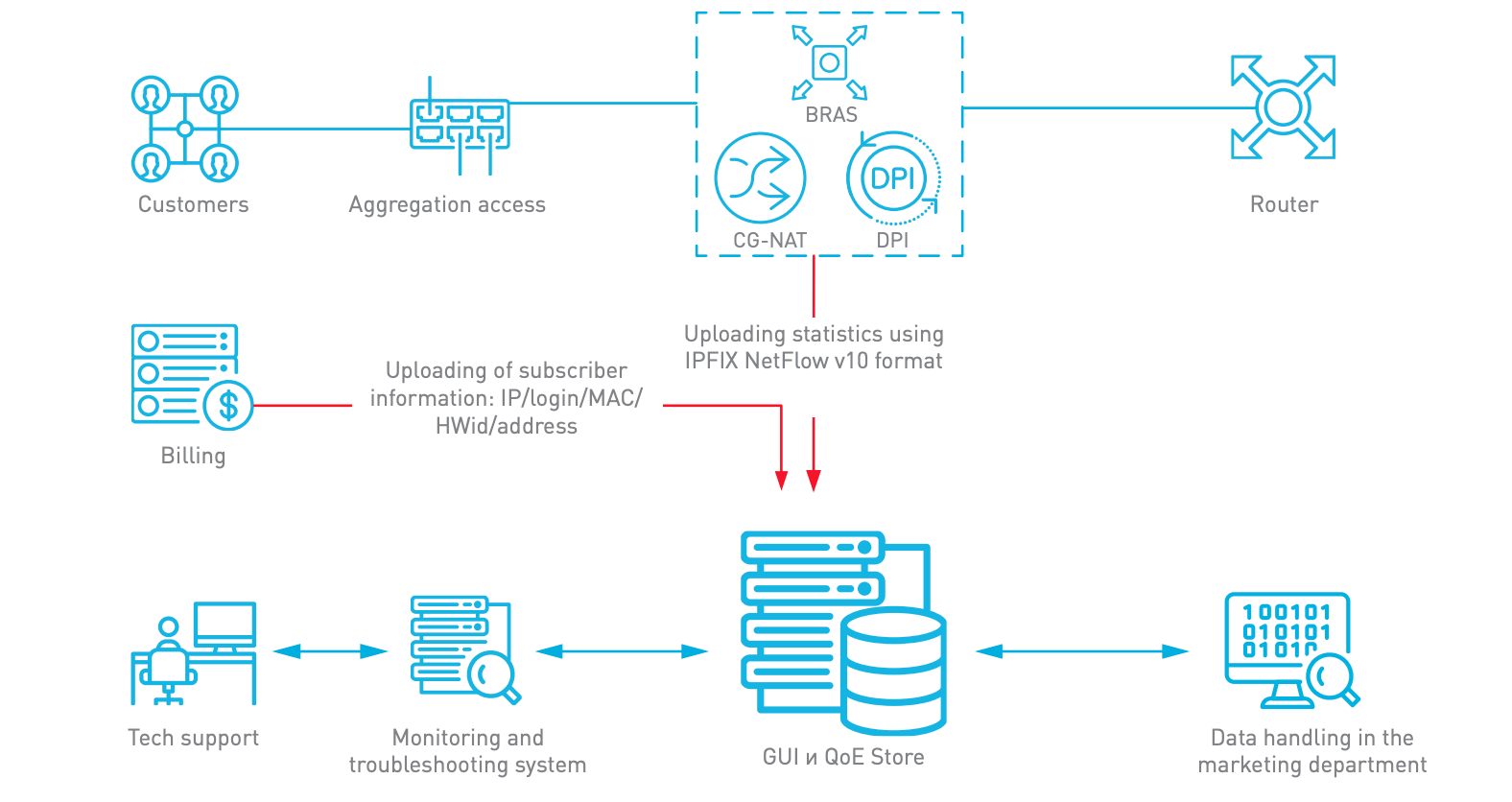Key Features
- Round Delay (RTT) Performance
- Number of retries
- Number of sessions, devices, agents, IP addresses per subscriber
- Traffic distribution by application and transport protocols
- Traffic distribution by directions and AS
- Clickstream for each subscriber+

Silat QoE
This is a software product created for collecting statistics and assessing the quality of service perception (Quality of Experience – QoE).
The resulting statistics is superimposed on specific metrics to determine user experience and take actions aimed at improving the quality of communication services.
QoE capabilities of traffic monitoring and analysis system

Metrics
- ROUND-TRIP TIME (RTT) PARAMETERS
- PARAMETERS OF REPEATED REQUESTS
- TRAFFIC DISTRIBUTION BY APPLICATION AND TRANSPORT PROTOCOLS
- TRAFFIC DISTRIBUTION BY DIRECTIONS AND AS
Capabilities
- Searching for subscribers having high delays and deterioration in the quality of telecommunications.
- Identification of issues with client data terminal equipment, Wi-Fi router, access and aggregation switch.
- Sale of equipment with the best performance in terms of coverage and functionality.
- Information uploading by means of the API to the monitoring system and the subscriber’s personal account.
- Configuring priorities on DPI depending on the channel allocation properties.
- Searching for optimal peering points and points to connect to higher level providers.
- DDoS and virus attacks tracking, developing countermeasure
Silat QoE installation using «machine-in-the middle» scheme and its integration with the BRAS/CG-NAT/DPI

Network traffic monitoring and analysis system. ClickStream
Metrics
- THE NUMBER OF SESSIONS,DEVICES, AGENTS, IP ADDRESSES PER SUBSCRIBER
- CLICKSTREAM FOR EACH SUBSCRIBER
- REFERENCES OF SUBSCRIBER PROFILE AND REGIONAL PROVIDERSCOMPETITORS PROFILES
Capabilities
- Dealing with customer outflow and analysis of the causes of such an outflow in the past.
- Fighting against Internet services reselling and forcing corresponding subscribers to use tariffs for legal entities.
- Gathering information about testing at www.speedtest.net and using it when contacting tech support.
- Identifying customers having left a bad reviews and further work with such clients.
- Subscriber segmenting by corresponding references – defining of solvent households, interests and used services for the purpose of subsequent services selling.
- Survey automation after the master’s departure to the subscriber
- Notification of network crashes and providing the reduction in the burden imposed on tech support.
- Marketing campaigns on new tariffs, services, and offers.
Silat QoE installation using «port mirroring» scheme

